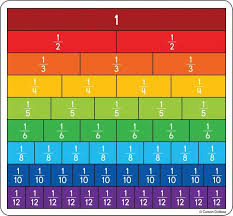Emily’s math report card said “Emily does well with concrete thinking” but “struggles with abstract thinking.” Emily’s parents didn’t understand the difference. They went to the math teacher to figure out how they could help Emily. They learned Emily needed more time using manipulatives to strengthen her conceptual understanding. Children who count on their fingers or who are visual learners may need to use manipulatives to help them understand math concepts.
A Quick Explanation
Math is a language used to describe the quantitative relationships and patterns of things in the universe. Just as in developing a language such as English, it takes years for kids to go from pointing to an actual ball and shouting “ball!” to recognizing the word for “ball.”
Using tangible objects, like a ball, is the first step towards a concrete understanding of the features of a ball - usually round, often bouncy, used for kicking, throwing, or catching. The next step toward abstract thinking is to introduce the child to symbols, like pictures that looks like balls, and have the child recognize the symbol as "ball". Finally, in the most abstract phase, only the letters “b-a-l-l” in a defined order are there. The child must mentally replace four arbitrary letters with a mental understanding of the features of a ball.
Making the Transition in Math
In math education, tangible objects are called “manipulatives” because the students can move the objects around, or manipulate them. Examples of common manipulatives include:
Linking cubes
Base 10 blocks 

Fraction bars 
Judy Clock 
Fraction Circles 
Actual Coins, and more!
Using manipulatives and symbols together helps develop a strong math foundation.
Learning Symbols in Elementary School Takes Time
Primary math books use a combination of pictures and numbers to help children transition between concrete thinking and abstract thinking. When asked if they would prefer half of their favorite cookie or the whole cookie, kids can easily determine they'd like the whole thing! Using manipulatives, students can also clearly see that ½ is bigger than ¼.

However, the idea that a number with a 4 in it is less than a number with a 2 can be mind blowing! It seems the complete opposite of everything the child has learned thus far. The symbolic representation of fractions confuse many kids. Why would ½ be bigger, or more, than ¼?
Children Get Time to Use Manipulatives at Mathnasium
Too many school children are “allowed” to use manipulatives for a short period of time and then the class quickly moves on to the abstract phase of practicing a skill. This limits true mathematical understanding. Without a solid conceptual foundation based on concrete experience, children end up with math gaps and a shaky math foundation.
Here at Mathnasium of Littleton, kids get plenty of time to explore math concepts with and without manipulatives. Come see why our motto is “We Make Math Make Sense!”
Additional articles you may want to read include:
Finger Counting: A Great Tool or a Hindering Habit
Math Takes Time to Conquer
Learning Math Symbols in Elementary School Takes Time
Is Mathematical Understanding Really Necessary
Why Does Mathnasium of Littleton Focus on Foundational Math Skills
This is copyright protected. Mathnasium of Littleton has permission to use it. Other Mathnasium locations should purchase it at http://hdwrite.com before using it.

















